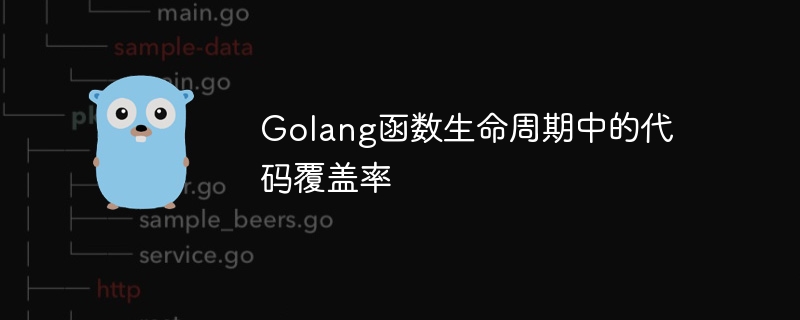
Go function life cycle includes definition, parsing, linking, initialization, execution and return phases. Code coverage is a metric that measures the coverage of test code. Using Go's built-in testing framework, code coverage analysis can be generated using the -coverprofile option. A sample function shows how to use code coverage to ensure that a function is fully tested in all possible situations.

Code coverage in Go function life cycle
Introduction
Function It is the basic building block in the Go language. Understanding its life cycle is crucial to writing efficient and maintainable code. This article will explore the various stages of the Go function life cycle and show how to use code coverage to measure the scope of testing at each stage.
Function life cycle
The life cycle of Go function can be divided into the following stages:
func keyword. main function, the init function will be called for initialization. Code Coverage
Code coverage is a measure of how much code in an application is covered by test code. It helps identify untested code and improves the effectiveness of tests.
Code coverage in Go
You can use Go's built-in testing framework to perform code coverage analysis. For example, the following command will generate code coverage for function myFunction:
go test -coverprofile=myFunction.cover -coverpkg=mypackage go tool cover -func=myFunction.cover
This will print out the percentage of each line covered in function myFunction.
Practical Case
Let us consider an example function that calculates the area of a circle:
package mypackage
import "math"
// 计算圆的面积
func CalculateCircleArea(radius float64) float64 {
return math.Pi * radius * radius
}We can use the -coverprofile option Test the function's code coverage:
go test -coverprofile=calculateCircleArea.cover -coverpkg=mypackage go tool cover -func=calculateCircleArea.cover
The output will show the percentage of each line covered in the function CalculateCircleArea. This helps ensure that the function is fully tested in all possible situations.
Conclusion
Understanding the Go function life cycle is crucial to writing high-quality code. Using code coverage helps evaluate the effectiveness of your tests and improves overall code coverage.
The above is the detailed content of Code coverage in Golang function life cycle. For more information, please follow other related articles on the PHP Chinese website!
 How to define variables in golang
How to define variables in golang
 What are the data conversion methods in golang?
What are the data conversion methods in golang?
 What are the commonly used libraries in golang?
What are the commonly used libraries in golang?
 What is the difference between golang and python
What is the difference between golang and python
 How to switch between full-width and half-width
How to switch between full-width and half-width
 How to trade VV coins
How to trade VV coins
 MySQL delete stored procedure
MySQL delete stored procedure
 What to do if the sound card driver installation fails
What to do if the sound card driver installation fails




